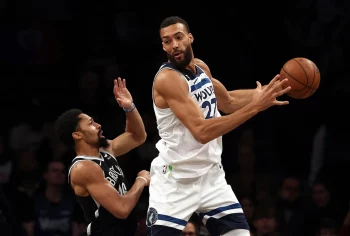NBA
NBA AM: Why There’s a Shot Clock

Today, we complain about hacking bad free-throw shooters in the final minutes of NBA games because it slows everything down and makes the game virtually watchable in close competitions.
If only we knew how spoiled we really were.
On November 22, 1950, in game between the Fort Wayne Zollner Pistons and Minneapolis Lakers, the pace of the game was so slow that the final score was 19-18, with the defending champion Lakers getting nipped in what must have been the least dramatic one-point game in the history of the sport.
It was an even slower sport in its earliest iterations, as games in the 1890s initially were played with a completely-intact peach basket, meaning every time a player scored, the game had to be stopped so someone could climb a latter and remove the ball from the basket.
The 1950s was when basketball became viable as a professional sport, but that didn’t make early competitions any less sluggish. This was in the era before the shot clock, obviously, and it came at a time when all-out, nonstop running simply wasn’t part of the game. Players in that era had no issue jumping, even if it was futile against the 6’10” enormousness of George Mikan, but sprinting like soccer players for 48 minutes just to score just wasn’t part of the strategy back then. It’s not like Dolph Schayes never broke a sweat, but the game wasn’t anything like it was today. It was, frankly, slower.
Part of that came because it was a commonly-employed strategy to attempt stalling out a win, and that of course led to a whole lot more late-game fouls so the losing team could more opportunities at possessions. In 1953, for example, there was a game between the Boston Celtics and Syracuse Nationals in which 106 fouls were called and 128 free throws were attempted, which is something that would get a ref crew fired today. To top it all off, it was a playoff game, and Bob Cousy finished with 30 points just from free throws alone.
A year later, in another playoff game between Syracuse and New York, the number of free-throws outnumbered field goals by a margin of 74-34, so it apparently got pretty tough to watch basketball at that point. Hack-a-Shaq was boring. Late-game hoops in the ‘50s were exponentially more so.
All that changed, naturally, when the shot clock came into existence for the 1954-55 NBA season. In the offseason, the NBA Board of Governors decided that it would be in the best interest of the league to speed up play by limiting how long a team could hold a possession. That’s how the idea of a shot clock came into existence.
If 24 seconds feels like an arbitrary number for such a timer, it isn’t. Danny Biasone, the owner of the Syracuse Nationals, proposed 24 seconds after putting together an offseason study in which he concluded that most teams were shooting between 75-80 shots per game on average, or approximately one shot every 18 seconds. Giving teams an extra 25 percent of time per possession would be enough to run plays properly without stalling the game.
Gameplay saw an immediate change. The league average points per game jumped from 79.5 to 93.1, while that year’s loaded Celtics team became the first in history to average over 100 points per game over an entire season.
Not surprisingly, it was then that the modern era of NBA basketball got underway and full-blown sprinting became a bigger part of team strategy. In fact, on February 27, 1959, just eight seasons after that slower-than-soil-creep 19-18 loss, the Lakers made history by losing to Boston 173-139, a combined score that was at the time a league record and remains one of the ten highest-scoring games in NBA history.
In other words, the game immediately changed for the better and had a huge impact on how the sport would evolve. It’s a quicker, more athletic game than it once was, but that doesn’t mean we can’t appreciate the game pre-shot clock, right?
Well, maybe not.











